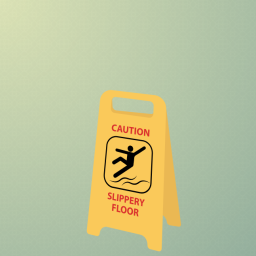Walking is a fundamental movement of life, and what better way to exercise your body for free? No expensive equipment or membership is required, just plain and simple walking. Here are some of the benefits of walking and tips to remember before setting out on your walk.
keep your bones healthy
Low bone density becomes more prevalent in Canadians over the age of 50. Over 2.3 million Canadians have osteoporosis, a condition characterized by low bone density. Regular weight-bearing exercise, like walking, every day can help maintain bone density and prevent levels from decreasing. Bone growth is stimulated by loading the skeletal system, such as during exercise. When we stop loading the skeletal system, including our spines, bone density reduces.
Additionally, if you are living with osteoporosis, walking may be a great low-impact exercise for you. A brisk walk every day will keep you moving and exercising without creating additional stress on your spine.
keep your joints healthy
Your joints are made to move. Think of your joints like a yellow sponge that will be more efficient and healthy when filled with fluid. With each step when walking, you are loading your joints and bringing them nutrients through absorption. With inactivity, the joints become dried out like yellow sponges looking for water. Dehydrated sponges become brittle and easier to injure compared to healthy sponges. Walking is a safe low-risk activity that will help keep your joints healthy like a fluid-filled sponge!
weight management
A brisk walk every day will have you feeling energized for many reasons and can help manage weight loss goals. There is no secret when it comes to weight management. Balancing the calories coming in and the calories coming out of our bodies every day is key. Adding a brisk walk to your routine will help you increase muscle mass and improve your calorie output. Creating a sustainable walking routine will help you achieve goals and maintain results over a long period.
help reduce the effects of stress
Finding ways to manage work and everyday life stress is a part of healthy living, walking is a great way to do this! Walking outside allows time in nature and exercise to reduce mental health conditions such as anxiety and depression. Walking with colleagues, friends, or family is also a great way to stay connected. Exercise in general helps to reduce stress and walking is simple and easy to add to your daily routine.
On your next walk, observe the scenery, the trees, and the flowers, or listen to birds. If you are close to traffic, tune into your favourite music playlist, podcast, or audiobook for entertainment.
reduce the risk of future injuries
Walking is a great way to maintain your cardiovascular and respiratory system functioning. Regular walking improves balance and coordination which helps prevent falls. Walking is also a great way to help prevent MSK (musculoskeletal) injuries by increasing the flexibility and mobility of our joints through a low-impact activity.
Preparing for your walk:
Equipment required for walking
Depending on the time of year, or the weather conditions, dress appropriately to prevent frostbite or sunburns. Additionally, ensure you have supportive sneakers that fit appropriately for your feet to prevent injuries. Ensure there is enough space in the front of the shoe to wiggle your toes, as this will be important for stability. Consider a pair of hiking sneakers for more grip for walking uneven trails. If you have any symptoms with walking as a result of flat feet or very high arches, consider an orthotic insert for added comfort and support.
Hydrate before and after your walk
Drinking water before and after exercise is the best way to prevent thirst and dehydration, regardless of the season. Consider bringing a water bottle and a light snack when walking for a long time and on hot summer days.
Are you walking properly?
Walking hunched over while scrolling on your phone and not looking where you are going is not recommended, and can be dangerous. To maximize your walk, have both arms relaxed by your side and let them swing naturally. If you haven’t walked in a long time you might have to think about your posture in the beginning. Your body should adapt quickly since walking is a natural activity. Keep your head looking forward and do what feels best for you. Having a light swing of the arms with each opposite leg stride is recommended for optimal walking biomechanics.
Ottawa is a beautiful city to walk through and offers many paths, sidewalks, and crossings for pedestrian-friendly neighbourhoods. Get yourself in the best condition for a new routine by visiting our team of healthcare professionals at CURAVITA. Visit us online to schedule an appointment or you can reach us by calling our Byward Clinic at 613-860-8600 or the Glebe Clinic at 613-237-9000.








[…] Chiropractic Sitting Too Much? By CURAVITA Health Team Chiropractic Curavita Wellness Work June 16, […]
[…] with everyday activities is a good place to start to help rebuild your core strength such as walking or picking up your child. Once you feel stronger, you can gradually increase your activity level. […]
[…] for the first few weeks to prevent further injury. Ask your chiropractor about less strenuous alternatives that could be right for […]
[…] of life. Goals that you set should be simple and reasonable, such as being able to go for a longer walk, being able to put on your socks comfortably or having a restful night’s sleep, […]